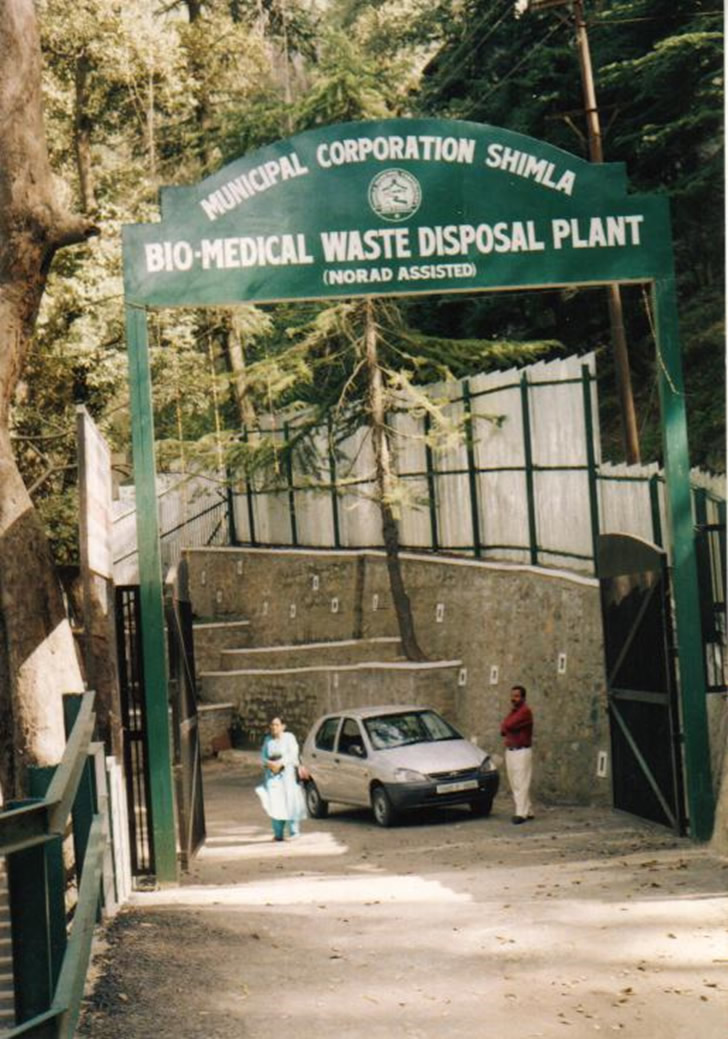
Disposal of Bio-Medical / Clinical / Hospital Waste
However difficult your waste problem may be, there is always a Haat incinerator available to offer a solution.
In this series, we will talk about different problems faced by clients and how these were resolved.
The first one is Bio-medical Waste.
We were perhaps one of the earliest to get involved in India with helping generators of bio-medical waste, starting from the Mallya Hospital in the private sector and the Air force Command Hospital Bangalore from the Military/Government sector.
The users generally identify the waste type and know what it can do if it is disposed of indiscriminately. However some of them do not have much of an idea of the right disposal mechanism.
In the year 1994, a very disturbing picture appeared in the news about indiscriminate dumping of hospital waste in Delhi. It was in fact a huge mountain of medical waste consisting of disposables, body parts, etc. From here, rag pickers were encouraged to scourge whatever they can, be it a blood bag, catheter, syringe, etc. and these found their way to the secondary market. Unsuspecting buyers bought this stuff at a low price only to face serious health issues caused by infection.
When the draft Bio-Medical Rules was introduced in 1996, there was no segregation of waste. It only categorised certain wastes as hazardous and suggested methods for disposal which included incineration, autoclaving / hydroclaving / microwaving, etc. Incinerator standards were also not mentioned at this time.
This resulted in the mushrooming of many incinerator manufacturers in the country who marketed their product at throw away prices. Those who bought these machines burnt their fingers rather than the waste as it had a very poor quality and performance, apart from an extremely limited life.
This made the regulatory authority introduce specifications for incinerators, autoclaves, etc. and also for segregation of the waste types and its method of disposal which included landfills also.
Today the specifications for incinerators are even very clear whereby downstream gas scrubbers and emissions are mentioned and common facilities have given way to individual machines. This is particularly true of cities and big towns.
There are still remote areas where there is no common facility where there is still a need for individual incinerators.
Whatever be the requirement, wherever the incinerators are required, Haat has risen to the demand by supplying:
- Incinerators
- Scrubbers of various types
- Loading and de-ashing systems
- Stacks
- Control panels
- Emission monitors
Apart from supply, Haat got involved in operating and maintaining incinerator systems of the common facilities in many cities including:
- Anantpur
- Hyderabad
- Jamshedpur
- Shimla
- Vijayawada
The models supplied were:
Additional equipment supplied include:
- Ram loader
- De-ashing system
- 30-m stacks
- Wet venturi scrubbers
- Cyclone separators
- Bag filters
- PLC control panels
- Skid-mounted designs
These incinerator systems did their job well, needed little maintenance, optimum running costs and had a long service life.
Today the disposal of bio-medical waste is no longer an issue.
Gaining increased acceptance within the country, Haat has supplied its incinerator systems to many countries globally.


